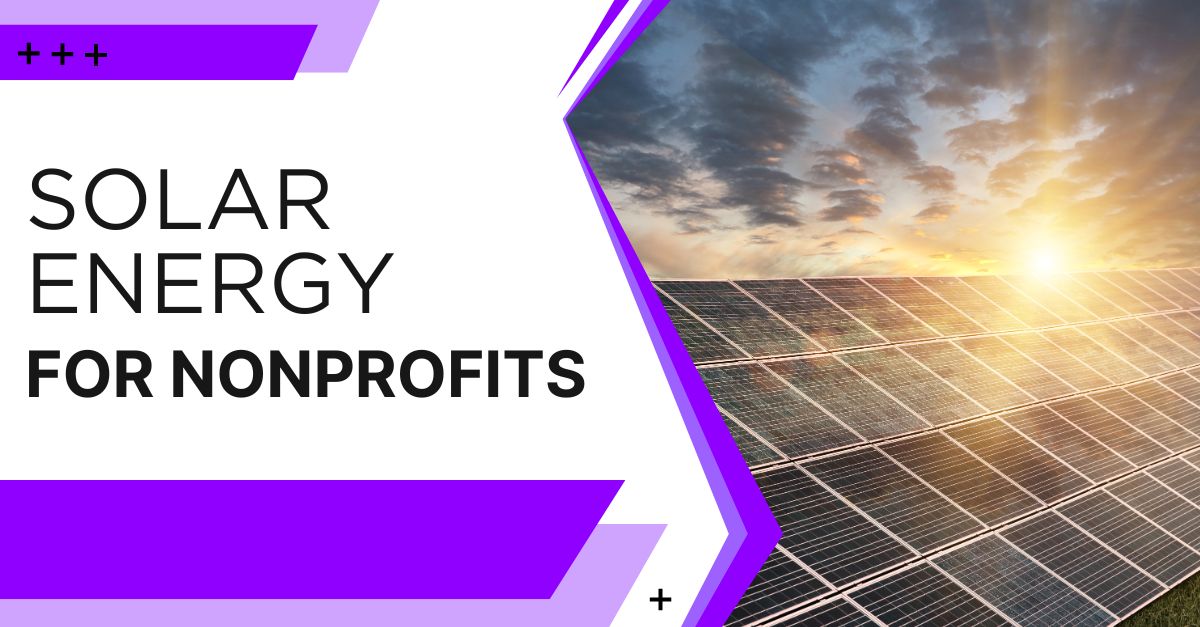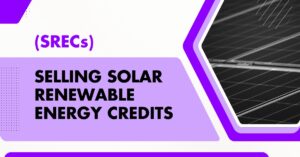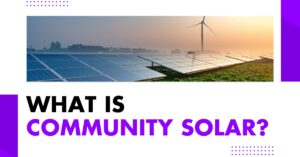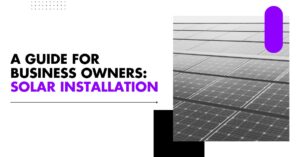How Solar Can Benefit Non-Profits

How Solar Can Benefit Non-Profits
Imagine slashing your operating costs, boosting your fundraising potential, and making a real impact on the environment – all while enhancing your nonprofit’s image.
Sounds too good to be true? Not when you go solar.
From reducing electricity costs to creating a positive ripple effect in communities, solar power offers all kinds of potential advantages to the country’s 1.8 million-plus nonprofit organizations.
So, exactly how can solar benefit nonprofits? We’ll show you how it can help you shine brighter than you ever thought possible.
How Solar Can Benefit Non-Profits
Thinking it’s time for your business to embrace and harness the power of the sun? Here are a few direct ways solar can benefit nonprofit organizations:
Decreased Operating Costs
Imagine being able to confidently budget for the next decade, knowing that your electricity costs will remain stable. This financial predictability can free up resources that can be redirected towards your mission, whether it’s feeding the hungry, educating children, or saving the environment.
The unfortunate reality is that electricity prices aren’t getting any lower. In fact, they’ve historically risen by at least 3% each year nationwide – and price increases can fluctuate based on the cost of fuel. In 2022, they went up by a whopping 10.7%.
That’s a tough pill for any business to swallow, but particularly for nonprofits that rely on donations and grants to operate – and tend to be operating on a shoestring budget as it is.
Solar energy offers a solution to this problem by providing a low fixed price for electricity – one that never changes. This makes it far easier to project operating costs into the future, while also freeing up funds for things that are more important for your organization’s mission.
More Money for Your Cause
Which leads us to our next point – every dollar saved on operating costs is a dollar that can be redirected towards your cause. By investing in solar energy, you’re not just reducing your expenses – you’re increasing the amount of money available for your programs and services.
For example, if your nonprofit spends $1,000 a month on electricity, switching to solar could save you up to $12,000 a year. That’s $12,000 more that can be spent on fulfilling your mission.
Whether it’s buying supplies for your programs, hiring additional staff, or expanding your reach, those savings can make a big difference.
Reduced Carbon Footprint
If your nonprofit is focused on environmental issues, going solar is a no-brainer. But even if your mission isn’t directly related to the environment, reducing your carbon footprint can still have a positive impact.
Solar energy is a clean, renewable source of power that produces no greenhouse gas emissions.
By switching to solar, your nonprofit can significantly reduce its carbon footprint and contribute to the fight against climate change.
Great PR
Today, people care about the environment and are more likely to support organizations that share their values. By going solar, your nonprofit can enhance its public image and attract more supporters.
Just imagine the positive press your nonprofit could receive by announcing its commitment to renewable energy. Local news outlets, community blogs, and social media platforms are always looking for feel-good stories. Your switch to solar could be just the ticket.
Increased Fundraising Potential
Going solar can also boost your fundraising efforts. Many donors are passionate about the environment and are more likely to support organizations that prioritize sustainability.
Hosting a fundraising event to raise money for your solar project can even be a great way to engage your community and attract new donors.
Plus, once your system is installed, you can highlight your commitment to renewable energy in your fundraising materials. This may help you build trust and credibility with potential supporters.
Contributing to the Ripple Effect
Did you know that installing solar panels can create a ripple effect in your community? Some data suggests that for every installation of solar in a community, you’ll see about 100 additional installations in that community within just five years.
By going solar, your nonprofit can inspire others in your community to do the same. This can lead to a collective reduction in carbon emissions and a greater impact on the environment.
How to Help Your Nonprofit Go Solar
Ready to make the switch? Start by evaluating your nonprofit’s current energy consumption to get an idea of the size of the solar power system required.
Then, you’ll want to do a site analysis. Make sure your facility has adequate roof or land space with sufficient sun exposure for the panels. Check local zoning laws, permits, incentives, and other regulations that may impact your project.
You’ll then need to choose a solar installer, but before you do, you’ll need to figure out financing. Here are a few things to keep in mind:
The Role of the Inflation Reduction Act
Installing solar panels used to be an uphill battle for nonprofits – or at least, it used to be.
Before the Inflation Reduction Act, only homeowners and businesses that paid taxes could get tax credits for solar installations. This forced nonprofits to team up with tax equity investors – big financial firms that could use the tax credits to lower their federal tax bills. These partnerships were often complicated, expensive, and burdensome for nonprofits already stretched thin.
Thankfully, the Inflation Reduction Act has simplified things. Now, there’s a new “direct pay” credit system that lets governments and nonprofits directly receive clean energy tax credits without needing tax equity investors.
The act also includes bonus tax credits for projects that create jobs and boost the clean energy economy. Projects in communities historically dependent on fossil fuels, as well as low-income and underserved areas, are also eligible for these extra credits.
Aside from that, there are a few financing options you might want to consider for your nonprofit:
Solar Lease
Think of a solar lease like a car lease. You pay a fixed monthly fee to use the solar system at your facility. Depending on the agreement, you might have the option to buy the system before the lease ends. Maintenance costs are usually covered, and you won’t pay for the energy produced.
Cash Purchase
Buying the solar system outright can speed up the installation process. However, nonprofits can’t benefit from tax incentives due to their tax-exempt status. You’ll be responsible for maintenance costs, but the energy produced is yours at no additional cost.
Power Purchase Agreement (PPA)
A PPA can be very beneficial for nonprofits. In this model, a solar provider owns, operates, and maintains the system, and you simply buy the energy produced at a discounted rate. This long-term payment plan can be a great way to go solar without upfront costs.
Direct Pay
Thanks to the Inflation Reduction Act, eligible nonprofits can now benefit directly from the federal tax credit through a provision called Elective (or “Direct”) Pay. This means the IRS pays your nonprofit the value of the tax credit.
After your project is completed, you’ll need to file the necessary tax forms to receive this payment. The tax credit covers 30% of the system cost through 2032, then decreases to 26% in 2033 and 22% in 2034. Special adders can increase the credit if your project meets certain criteria.
State and Local Incentives
Don’t forget to check out state and local incentives as well. States, local governments, and some utilities offer grants, special financing, property tax exemptions, and technical assistance to help nonprofits go solar. Your local installer or state energy office should be able to provide more details.
Go Solar To See the Difference Your Nonprofit Can Make
Switching to solar energy is a smart move for any nonprofit organization. From reducing operating costs and increasing fundraising potential to making a positive impact on the environment, the benefits are clear.
And now, with the new opportunities provided by the Inflation Reduction Act and various financing options available, going solar has never been easier for nonprofits.
Ready to explore the advantages of solar technology? Partner with IE Construction, your reliable ally for seamlessly integrating solar solutions into your projects. Together, we can illuminate a brighter, more sustainable path forward.




